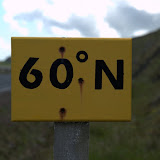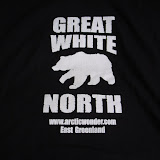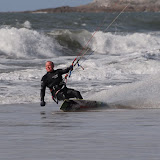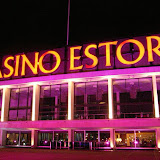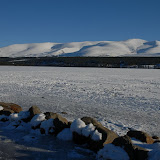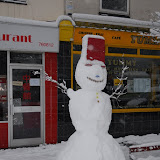Travel guidebooks and, indeed, tour leaders have a predilection for adjectival overload.
“Svalbard is the destination for an unforgettable holiday. This wonderous archipelago is the world’s most accessible piece of the polar north and one of the most spectacular places imaginable” [Lonely Planet]
“The islands of Svalbard comprise an Arctic wilderness where nature reigns supreme” [Bradt guide]
“A journey around the spectacular Arctic region of Norway's Spitzbergen Islands takes you into a remote land of dramatic icy peaks and glistening glaciers.” [Exodus website]
“..this will be a very special expedition.” [Exodus/Quark Expeditions trip notes]
And these all understated the trip.
I (and about 100 other fortunate individuals) were lucky enough to be able spend 11 days on the Akademik Sergey Vavilov exploring
Svalbard – over the course of the 11 days we covered about 1500 nautical miles, had ten zodiac cruises plus three landings, saw at least 22 species of birds and watched walrus, seals, dolphins, whales, reindeer and arctic foxes. And saw and photographed a huge number of polar bears. As each day passed the adjectival overload got more extreme – and hearing haggard (and some not so haggard) arctic veterans waxing lyrical about what they’d seen on each outing really did start to help us “high-arctic novices” realise quite how good our fortune had been. There was a real sense of disbelief that things could go on at such a pace – but they did. The bar talk (often huddled around laptops) allowed everyone to enthuse about what they’d seen and to share superlatives with someone else who’d seen pretty much the same thing. By the end of the trip the enthusiasm was being tempered (just slightly) with discussion about how much space was left on memory cards – and whether it was reasonable to delete a perfectly exposed and framed image of a polar bear (now just a “PB”) because it happened to have one eye closed at the moment the shutter was pressed. At the start of the trip every PB was getting extended photographic attention, by the end of the trip it wasn’t really worth slowing the zodiac unless it was mother with at least one cub, and preferably two.
The trip started at Longyearbyen and headed south towards the southern tip of Spitsbergen. Our polar bear spotting got off to an early start with a single bear spotted at the end of Hornsund. With hindsight one could have suggested that this sighting was staged by the expedition staff to let us see just how challenging it was to spot a slightly-ivory-coloured bear over a mile away across fast ice at the front of a glacier. On day two the bear spotting got easier, much easier. The intention had been to spend the day cruising along fast ice looking for bears, in fact one of the expedition staff sitting in the bar spotted a bear in the water just after breakfast and cautious manoeuvring of the Vavilov allowed us to get close enough for a clear look at the bear swimming before it headed off onto the ice and into the mist. The decision was made to just sit still and see what happened – eventually the curiosity of the bear (a young male) got the better of it and it choose to come back out of the mist and to have a good look at the ship at close quarters. It didn’t quite get as far as trying to head up the gangway, but it was clearly very interested in learning a bit more about us. Having had a close look at us, and done a few of his party tricks, he opted to head back off into the ice, and our expedition crew got to make one of the harder calls of the trip.
We were told that the ship had been given a really ‘hot’ tip, and that despite the fact that we had already been very fortunate in the southern part of the islands, we were going to spend the next 24 hours steaming north as fast as we could, to an undisclosed destination. Speculation ranged far and wide – there was a mother and cubs to be seen, a whale had been washed ashore, we were heading to the pub in Ny Alesund to watch the England – Germany match. The crew and expedition staff said nothing.
Early afternoon on the third day saw us just outside Holmiabukta near the northern tip of Spitsbergen island – and finally getting the chance to see what the hot tip was. We were rewarded almost immediately with a single bear on the water’s edge, then another adult with a cub in tow, then on the far side of the bay another adult, and another female with cub. The sequence just carried on, on both sides of the bay until we’d seen at least 9 different bears. Eventually the crew called for a return to the Vavilov for dinner, before a return trip in the evening by which time the sun had shifted, and the tide had gone out (tides are apparently very difficult to figure in/around Svalbard). The evening light revealed a bear plus cub on the ice at the foot of the glacier at the end of the bay, and the falling tide revealed the remains of a whale that was clearly the real driver for the bear-related activity around the bay. Above the waterline was a picked-clean whale spine, below the water was clearly enough rotting meat to provide for a lot of bears.
From the “Bay of Bears” we headed on northwards to Woodfjorden, and the Andoyane islands. The islands are mainly bird reserves – and gave fantastic views of Red Phalaropes and King Eider, but the PB’s just wouldn’t let up and we found a freshly washed bear around one of the islands – this time even more dramatic against a dark island background.
Leaving the bears behind for a few days we forged further north crossing the 80 degree line (it’s always good to clock up another geographic landmark) to be greeted by a group of walrus near Moffen Island – finally dropping anchor in Sjuoyane, the northern-most part of Europe (80.6 N). This really did feel bleak, the bright sunshine that we’d been enjoying continuously since leaving Longyearbyen disappeared into the mist, and it wasn’t difficult to realise that we were just a few hundred miles from the north pole.
As we headed southwards we stopped back at Holmiabukta to see if there was any more bear action. This turned out to be the most dramatic photographic day of the trip. We spent about 8 hours in zodiacs around the bay in two extended sessions, watching bears (and cubs) in every direction – pretty much just getting on with being bears. From solitary older male bears, to a mother nursing a young cub. From the antics of a small bear as it tried to get scraps its mother had pulled from the whale skeleton to an indulgent mother watching her two curious cubs investigating our small flotilla of zodiacs.
The trip provided truly amazing opportunities to see polar bears in their natural habitat, doing what bears do – I’ll be picking through the pictures I took for many weeks, and I’ve not said much about visits to bird colonies, the chance to see walrus, reindeer and arctic foxes in the wild and the fantastic scenery around many of the glaciers.
The pre-trip puff had promised “a very special trip” – but I think it far exceeded even the wildest imaginings of the crew.
Paul Goldstein infected everyone with his photographic expertise and enthusiasm (and adjective collection) and ensured that we all got back to the UK feeling pretty seriously sleep-deprived but with amazingly good photographs. Woody and Annie and the rest of the
Quark Expeditions crew (and the captain and crew of the Vavilov) provided fantastic access to the wildlife, and
Ian Stirling both interpreted what the bears were doing for us, and ensured that we weren’t influencing the bears behaviour adversely.
It was also a privilege to spend 10 days with so many fantastic photographers – I learnt a huge amount just by talking to other people and seeing what they were doing, and how they were doing it.
This was my first trip on the Vavilov. It won’t be my last – the only question now is whether to book a return trip to Svalbard next, or to head back to Antarctic.
I also took far too many pictures - a few that have grabbed my attention as I've started to go through them are linked below.






